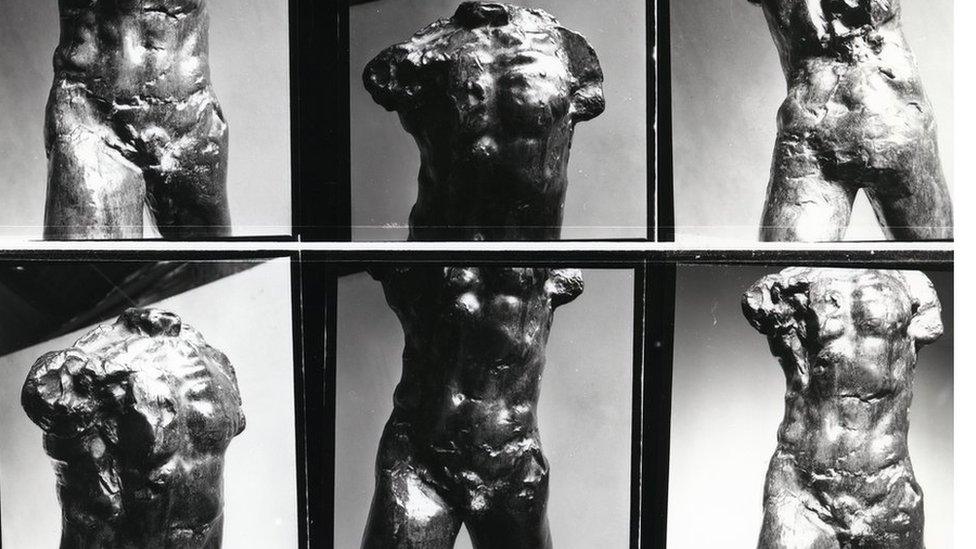Henry Moore sculpture Mother And Child sells for £400,000
- Published
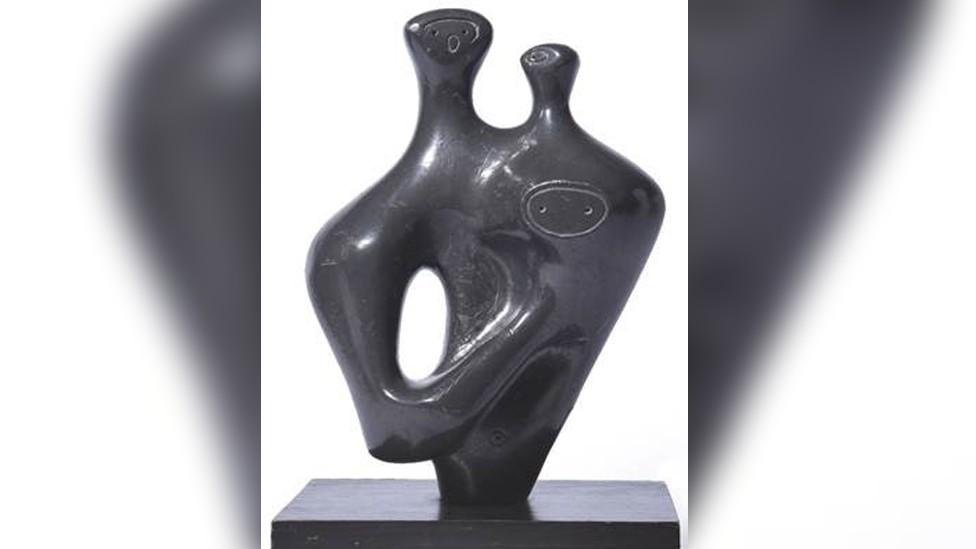
The Mother and Child sculpture was created by Henry Moore in about 1939-40
A sculpture by pioneering Yorkshire artist Henry Moore has sold at auction for eight times its top estimate.
The lead sculpture, titled Mother And Child, is considered "extremely rare" as it is a material the sculptor used only for a short period in the 1930s, Dreweatts auctioneers said.
The piece was expected to fetch between £30,000 and £50,000, but the winning bid reached £400,000.
Dreweatts said: "Rare and unique pieces always inspire competitive bidding".
The sculpture, crafted by Moore in 1939-40, was bought by a UK private collector at Dreweatts Modern and Contemporary Art auction on Wednesday.
It had been a gift to its original owner, Hubert de Cronin Hastings, who at the time was editor of The Architectural Review - a long-standing international magazine published in London.
In the 1970s, it was passed down to his son, John Hastings, who kept it on his mantelpiece among an eclectic mix of objects until his death in 2019.
Francesca Witham, a specialist at Dreweatts, said: "It shows that rare and unique pieces will always inspire competitive bidding and that the appetite for such works remains strong.
"The sculpture was enthusiastically contested, with bidding both online and on the phones, and, having been left undiscovered for over 40 years, this very special lead sculpture now heads to a new home."
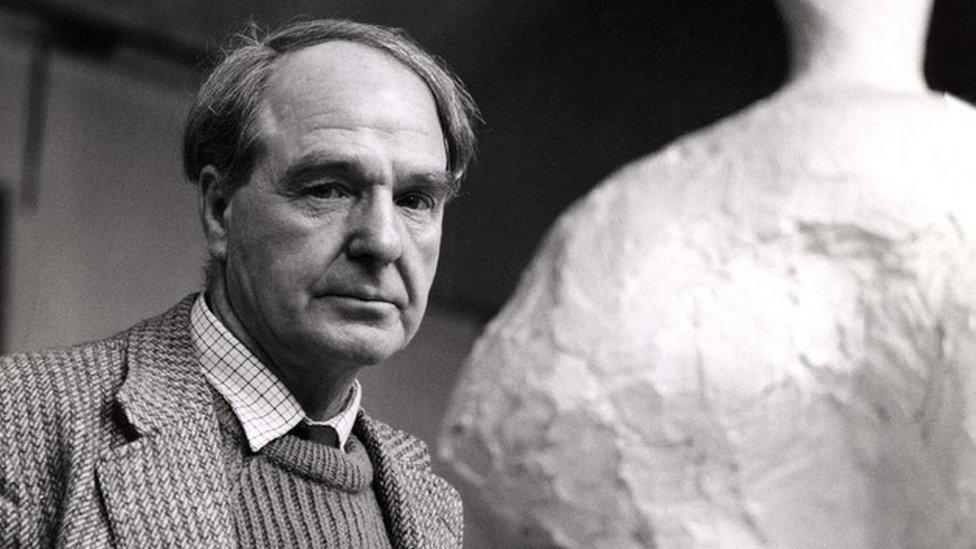
The artist was the first British artist to become globally recognised in his lifetime, according to the Henry Moore Foundation
The Henry Moore Foundation linked the work to a 1939 sketch by Moore from its records, titled Eighteen Ideas For Sculpture.
Moore was born in Castleford, West Yorkshire, in 1898, and later moved to Perry Green, near Much Hadham, in Hertfordshire, where he stayed for the rest of his life.
Renowned for his semi-abstract monumental bronzes, Moore was the first British artist to become globally recognised in his lifetime, according to the foundation.

Follow BBC Yorkshire on Facebook, external, Twitter, external and Instagram, external. Send your story ideas to yorkslincs.news@bbc.co.uk, external.
Related topics
- Published18 January 2022

- Published28 July 2021
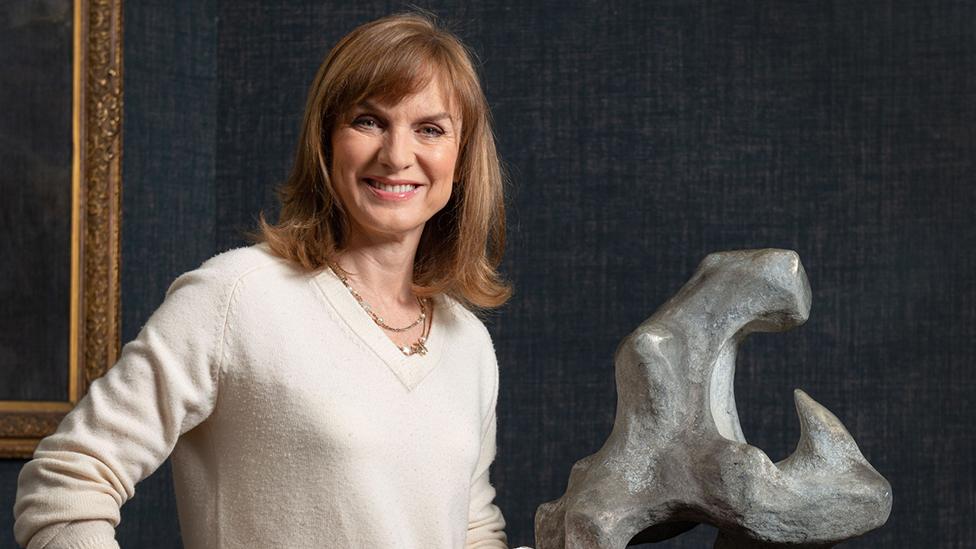
- Published12 May 2021
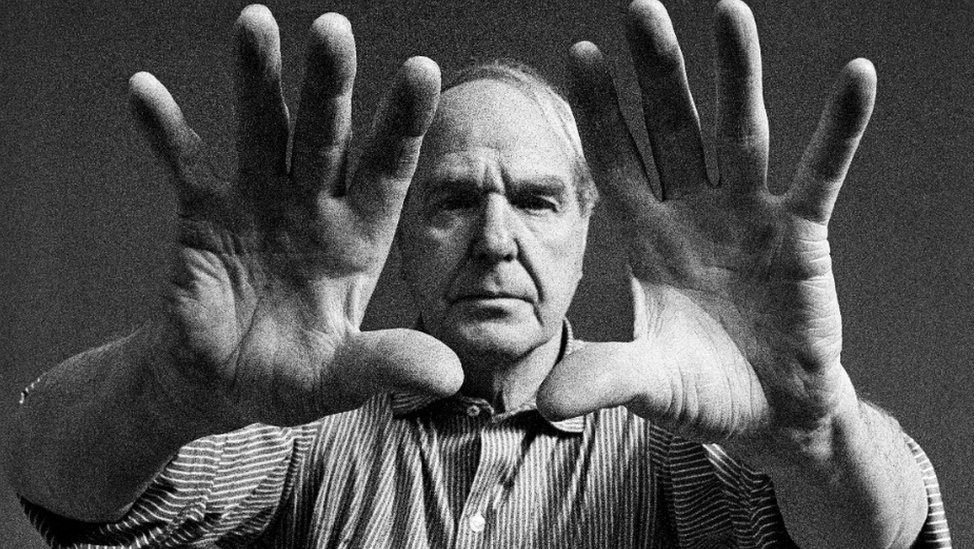
- Published18 February 2020
